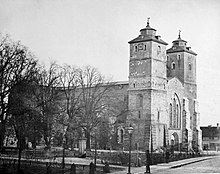



List of (arch)bishops of Lund. Until the Danish Reformation the centre of a great Latin (arch)bishopric, Lund has been in Sweden since the Treaty of Roskilde in 1658. The Diocese of Lund is now one of thirteen in the Church of Sweden.




List of (arch)bishops of Lund. Until the Danish Reformation the centre of a great Latin (arch)bishopric, Lund has been in Sweden since the Treaty of Roskilde in 1658. The Diocese of Lund is now one of thirteen in the Church of Sweden.
(all Roman Rite; some dates disputed according to the source)



Denmark recaptured Scania 1676–1679; Peder Winstrup continued as bishop during these years.

Skåneland or Skånelandene (Danish) is a region on the southern Scandinavian peninsula. It includes the Swedish provinces of Blekinge, Halland, and Scania. The Danish island of Bornholm is traditionally also included. Skåneland has no official recognition or function and the term is not in common usage. Equivalent terms in English and Latin are "the Scanian Provinces" and "Terrae Scaniae" respectively. The term is mostly used in historical contexts and not in daily speech. In Danish, Skånelandene is used more often. The terms have no political implications as the region is not a political entity but a cultural region, without officially established administrative borders.

The Diocese of Skara is the oldest existing diocese in Sweden. It was originally a Latin bishopric of the Roman Catholic church, but since the Protestant Reformation has been a Lutheran diocese within the Church of Sweden, with its seat in Skara at Skara Cathedral. In 2014, it celebrated its 1000-year anniversary as a full diocese.

The former Diocese of Aarhus was a Roman Catholic diocese in Denmark, founded in the 10th century and dissolved during the Protestant Reformation. The diocese included the counties of Aarhus and Randers, the islands of Samsø and Tunø, and, after 1396, part of the county of Viborg.
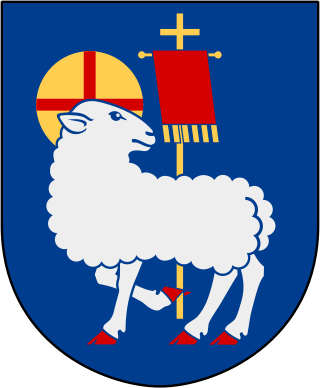
The Diocese of Västerås is a diocese within the Church of Sweden. Its Episcopal see is located in Västerås at Västerås Cathedral. The diocese was first established in the 12th century as part of the Roman Catholic church, but was made part of the Church of Sweden as a result of the Protestant Reformation in Sweden.
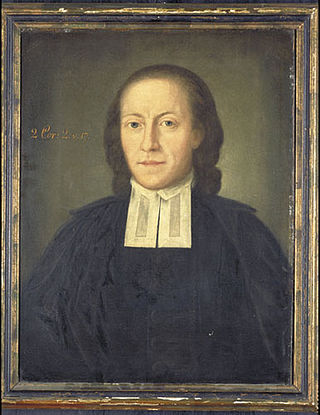
Henric Schartau was a Swedish Lutheran pietistic priest. His theology, including his characteristic teachings on the "order of grace", influenced a revivalist movement known as Schartauanism.

The former Diocese of Odense was a Roman Catholic diocese in Denmark which included the islands of Funen, Langeland, Tåsinge, Lolland, Falster, Als, and Ærø. Its episcopal see was located in Odense at St. Canute's Cathedral.
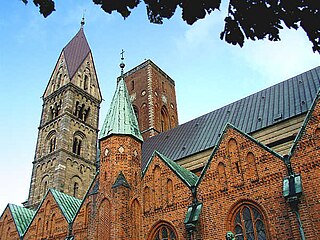
The former Diocese of Ribe was a Roman Catholic diocese in Southern Jutland, Denmark. The diocese was established in 948, and dissolved in 1536 during the Protestant Reformation. Within the newly established protestant Church of Denmark, the Diocese of Ribe effectively replaced its Roman Catholic precursor.

Peder Pedersen Winstrup was Bishop of Lund in Scania. Winstrup was bishop there during a period spanning both Danish and Swedish sovereignty and periods of war when the land was contested. He was married to the Danish noblewoman, Dorothea von Andersen who was an influential person in her own right in Scania and known to be strongly pro-Danish.
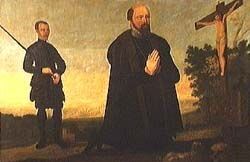
Otte Krumpen (1473–1569) was a Danish bureaucrat, who was Marshal of Denmark from 1554 to 1567, and held seignory over various land holdings throughout his career. He held a ceremonial position in the coronation of Danish kings Christian II and Frederick I. He was the older brother of Danish Catholic bishop Stygge Krumpen. The Krumpen family name died with him.
The Diocese of Zealand was a Protestant diocese in Denmark that existed from 1537 to 1922. The diocese had been formed in 1537 following the Reformation of Denmark, and was dissolved in 1922 when it was divided into the Diocese of Copenhagen and the Diocese of Roskilde. While it existed, the diocese functioned as the head of the Church of Denmark, beneath the crown, and its bishop was regarded as Primus inter pares.

The former Diocese of Roskilde was a diocese within the Roman-Catholic Church which was established in Denmark some time before 1022. The diocese was dissolved with the Reformation of Denmark and replaced by the Protestant Diocese of Zealand in 1537.

Jens Toller Rosenheim, was a Norwegian nobleman, jurist and official.

Gjorslev is a cruciform medieval castle located 17 km south-east of Køge, on the Stevns Peninsula, Stevns Municipality, some forty kilometres south of Copenhagen, Denmark. Originally owned by the Bishop of Roskilde, it is considered one of the most well-preserved examples of Gothic secular architecture in Denmark.

Vitus Pedersen Bering was a Danish poet and historian. He served as Danish Historiographer Royal and was the great uncle of the explorer Vitus Bering (1681–1741).
Johan Weze, also known as Johan von Weeze, was a secretary of King Christian II of Denmark and a diplomat at the service of the Holy Roman Emperor Charles V. In 1522, he was appointed Archbishop of Lund. He followed Christian II into exile but resigned as his secretary when Christian refused to follow the policies of his brother-in-law the Emperor Charles V. In 1527 Weze joined the service of the Emperor as a diplomat and participated in numerous missions in the Holy Roman Empire. He was appointed Prince Bishop of Constance in 1537, a post he held until his death in 1548.

The Danish Constituent Assembly is the name given to the 1848 Constitutional assembly at Christiansborg Palace in Copenhagen that approved the Danish Constitution and formalized the transition from absolute monarchy to constitutional democracy. It consisted of members of which 114 were elected by the people, 38 were appointed by the king and the rest were government ministers.
Johan Weze inleddes i domkyrkan den 23 febr. 1522. 20 Han hade utsetts genom postulation, ej genom elektion. Det förstnämnda förfaringssättet kom till användning i de fall, då den påtänkte kandidaten på grund av något i den kanoniska ...